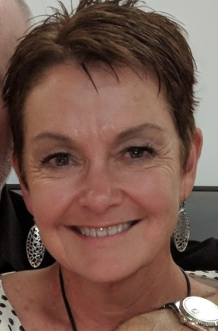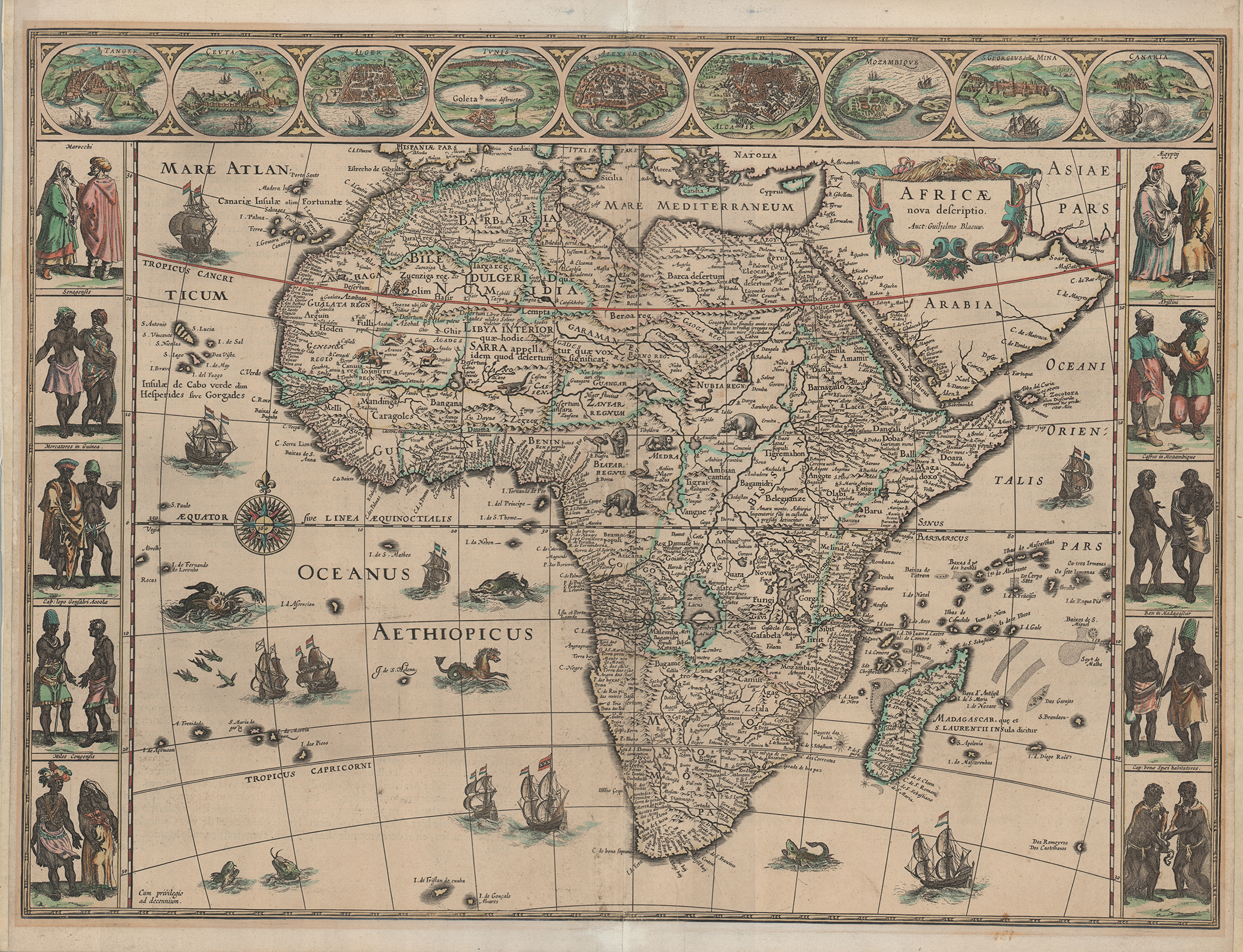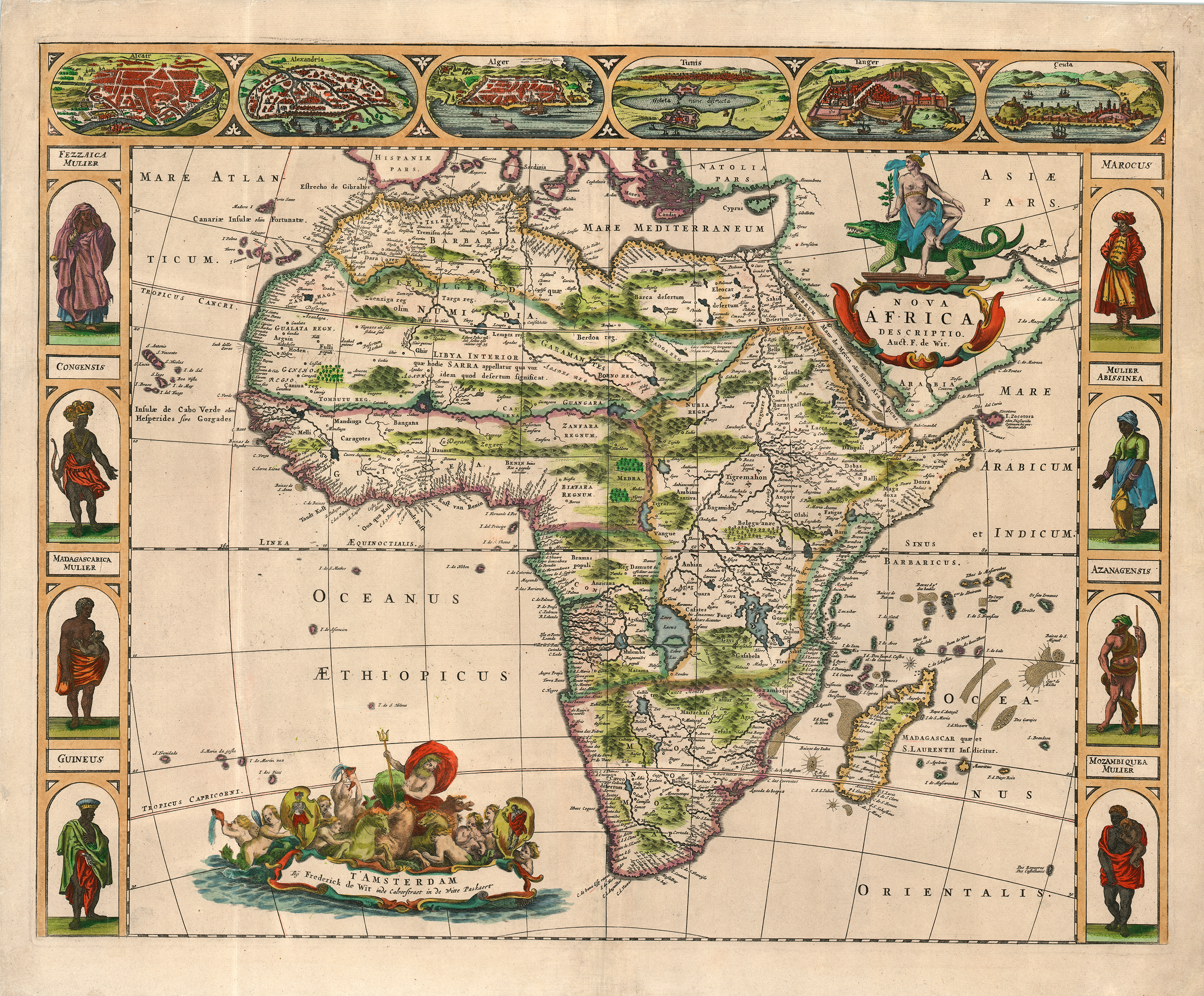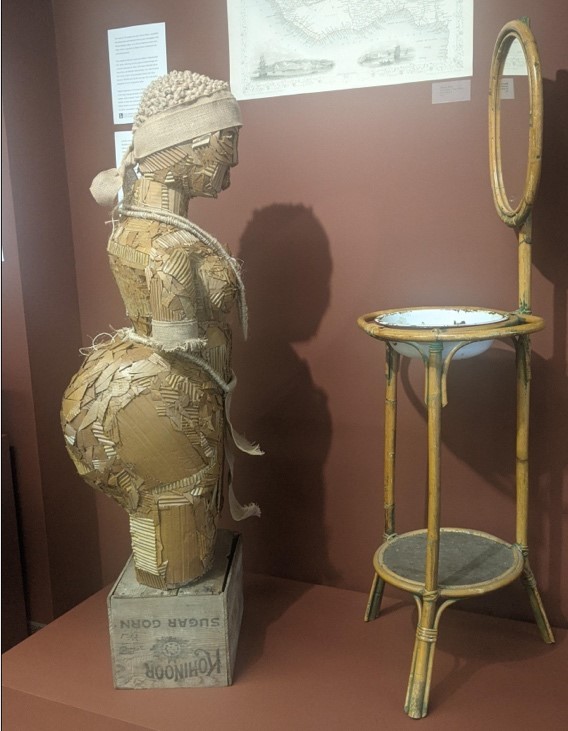
by Stephanie Luke


by Stephanie Luke
The purpose of The Compass Rose is to raise awareness of Special Collections' resources and to foster the use of these resources. The blog series also reports significant new programs, initiatives, and acquisitions of Special Collections.
Today, Special Collections presents a special guest post from Anthropology undergraduate student Deb Vickery. She takes us on a journey from historic Africa to modern-day Texas and back to Africa to consider the intersections of cartography, science, racism, and art. Deb developed this post as part of the Art of Sub-Saharan Africa class, which explores the Searching for Africa exhibition, now on display at University of Texas at Arlington Libraries’ Special Collections.

Let’s take a trip together, a trip to Africa in the 1600s. Global sailing expeditions by Magellan, Vaso de Gama, and Drake had opened the eyes and minds of Europeans to exotic foods, spices, majestic animals, and to peoples whose customs and appearance were like nothing they had ever seen. Among the most exotic was Africa.
Maps as wall decor had become big business. Lively and colorful maps became top sellers. Mapmakers Willem Janz Blaeu and Jodocus Hondius employed a clever way to impart an authoritative worldview to their maps by producing works known as Cartes-à-figures, many of which are part of the still-expanding UTA Dr. Jack Franke Maps of Africa Collection, which are on display in the current Searching for Africa exhibit at UTA Libraries’ Special Collections (e.g., Figures 1 and 2). The French term cartes-à-figures refers to maps (cartes in French) presented with images of human figures. Such maps incorporated easily detachable and changeable borders depicting scenes and peoples of Africa (Butler 2004), as seen in Figures 1 and 2.
Both Blaeu and Hondius employed artist Hessel Gerritsz as their cartes-à-figures designer for the maps illustrated in Figures 1 and 2 (Butler 2004). Gerritsz borrowed imagery from classical Greek and Roman statues, reusing his images for different mapmakers (ibid), as seen in both the Blaeu and Hondius maps (Figures 1 and 2 respectively). Looking closely at the figural panels in each map, we find that except for the colors, many of the scenes are identical. Clothing was derived from a mix of travelogues and European idealization of what they thought African people to be (ibid).

Figure 1: Willem Janz Blaeu, Africa Nova Descripto, 1621. UTA Libraries Special Collections. Currently on view in Searching for Africa exhibition at Special Collections.

Figure 2: Jodocus Hondius, Africa Nova Tabula, 1623. UTA Libraries Special Collections. Currently on view in Searching for Africa exhibition at Special Collections.
These maps would have been some of the first images of African peoples available to European populations. The imagined and exotic nature of this and similar imagery, seemingly benign at first, significantly impacted European, and later Euro-American, views of Africa. In the 1600s, there was no language of racism targeting peoples of African descent. Yet racism had begun to emerge, using coded visual messaging in lieu of words.
While a shared language had not yet been formed to negatively portray Africans, visual depictions conveyed broadly understood messages to Europeans. Consider the lower left-hand cartouche in a 1660 Frederick de Wit map (Figure 3), which prominently depicts the Greek sea god Poseidon. Europeans knew ancient Greek and Roman people had worshipped so-called “pagan” gods. This imagery coupled with the posed figures styled on Greek and Roman statuary clearly sent the message that Africans were pagans. Soon cartes-à-figures and other slice-of-life scenes fell out of favor, eliminating the interesting depictions of African people. Plain, unadorned maps followed in what is considered a “cartographic silence” (Rossetto 2015). Scholars assert this omission was an early form of racism (ibid). Europe had lost interest in African people, the focus shifting to Africa’s resources and colonization (Bassett 1994).

Figure 3: Frederick de Wit, Nova Africa Descriptio (Amsterdam: Frederick de Wit, 1660). UTA Libraries Special Collections. Currently on view in Searching for Africa exhibition at Special Collections.
By the late 1800s, racism was fueled by commercial and colonial interest, as seen in Dutch and then British activities of Cape Colony (present-day South Africa). In an 1870 painting by Englishman Charles Davidson Bell, The Landing of van Riebeeck at Table Bay, 1652, dark-skinned Africans are portrayed in deep shadow, their clothing and colors drab. All but one is sitting, implying laziness and/or lack of power to the European viewer, while another figure is standing, his hands clasped in a gesture of supplication. The fair-skinned Dutch figures are bathed in bright sunlight, all standing tall and proud around the central and tallest figure, van Riebeeck, offering an unambiguous message of superiority, light, and strength. Porters unload cargo from van Riebeeck’s ship in the background, establishing a Dutch foothold in the Cape. The depictions of Africans by Bell, a leading propagandist for British imperialism, was likely informed by a popular “science” of the time: phrenology. Phrenologists claimed a person’s character could be determined by their facial and cranial features. Bell had been invited to be the official draftsman on an African exhibition led by a well-known phrenologist, Thomas Bowler (Strydom 2009). Such expeditions sought to “prove” that Africans were inferior through physical observation and aligned with other “scientific” research of the time by asserting that dark-skinned Africans were evolutionarily more like apes than Europeans. Today, phrenology and such misunderstandings of evolution are known as pseudo-science, but they were once considered legitimate medical studies often cited as scientific justification for racism (Conklin 2021).
Between van Riebeeck’s landing in the Cape and Bell’s memorializing of it, an indigenous Khoikhoi woman, known today as Sarah or Saartjie Baartman, was born in the Cape Colony between 1770-1790 (Crais 2020). After experiencing severe violence and losses early in her life, she worked as a domestic servant for a Dutchman in Cape Town (ibid). Although she was illiterate, when he fell on hard times he coerced her into signing a contract putting her into the employ of an Englishman who later sold her to a Parisian animal exhibitor, S. Reaux (ibid). Like many Khoikhoi women, Sarah’s genetic body type featured large fatty deposits in the buttocks, a trait considered beautiful among the Khoikhoi, but a freakish novelty to Europeans.
Reaux held elaborate parties, using Sarah, known as the Hottentot Venus, as the main attraction, sometimes having her appear nude and possibly forcing her into sex work (Parkinson 2016). Famed anatomist, Georges Cuvier, whose interest was large mammals, met Sarah at one of Reaux’s parties (ibid). He conversed and danced with her (ibid). Upon Sarah’s death, Cuvier asked for and was granted rights to her body, making a plaster cast prior to dissecting her (ibid). Although he had spent time with her, even danced with her, he showed her no respect in death. Cuvier was not looking to see what may have killed 26-year-old Sarah. He was looking for a direct link between Sarah and the animals he studied, according to the prevailing “evolutionary” theories of Black African inferiority of that period. He preserved her brain and genitals, all of which, along with the nude plaster cast, were displayed at Paris’ anthropological Musée de l’Homme (Museum of Mankind/Humankind) until 1974 (Crais 2020).
Now, our journey takes us home to DFW and the environs of UTA, because grotesque racism does not stop at Europe’s western shores. Dallas opened its first medical school in 1900 (Davidson 2007). There was great need for cadavers at the school, but there were more aspiring doctors than available specimens (ibid). After the Civil War, freed African Americans, anyone identified as “Black,” and paupers were buried at Freedman’s Cemetery, located at Central Expressway and Lemmon Avenue in Dallas (ibid).
Throughout the nineteenth century, white America accepted as medical fact the idea that people of African descent were physically and mentally inferior, and therefore not deserving of the same rights as Euro-Americans (Davidson 2007). Although graverobbing was illegal, the medical school had an illicit agreement with Dallas’ city and county officials (ibid). When a deceased person was buried at Freedman’s, the city let the school know. Money was exchanged and graverobbers, known as “Night Doctors,” were sent to exhume the remains, dump previously dissected body parts into the emptied coffin, and provide the newly scavenged remains to the medical school for training exercises (ibid). Such practices did not just occur in Dallas but must be understood as part of the history of this region. Our own history is wrapped up in the kinds of treatment felt by women of color like Sarah Baartman.
Importantly, the maltreatment of Sarah Baartman’s remains over almost two centuries in Paris was not the end to her story. In 1994, South African President Nelson Mandela requested the plaster cast and the dissected remains of Sarah be returned to South Africa for a proper burial (Crais 2020). Finally, 192 years after she was forced to leave Africa, Sarah was returned to her homeland in March 2002 (ibid).

Figure 5: Shayna Sutton, Sarah, 2021, on display in the UTA Fine Arts Building Visual Resource Commons. Photo by author.
Here in DFW and at UTA, this Fall 2021 semester UTA art student Shayna Sutton pays tribute to the memory of Sarah with her sculpture titled “Sarah” for the Africa Found exhibit in the UTA Visual Resource Commons Gallery (Fine Arts Building 2109; on display until Dec 4). Using recycled cardboard and other used items, Sutton has given Saartjie Baartman a new life, a second beginning. The Afrikaans Dutch spelling of her name (Saartjie) is deliberate. While it may not be her birth name, it is the name she knew herself by most of her life. Rest in peace Saartjie Baartman, you’re back home.
Often in America, thoughts about racism are limited to slavery, and more recently, possibly police profiling. The UTA Libraries Special Collections’ Searching for Africa and Art & Art History Department Africa Found exhibitions help to trace the early budding of European racism, the roots of Euro-American racism, and the many different and hideous trajectories they have historically taken. In response, artists like our own Shayna Sutton revitalize stories lost due to racism and expose how they relate to our lives today.
Bassett, Thomas J. 1994. “Cartography and Empire Building in Nineteenth-Century West Africa.” Geographical Review 84(3):316–35. doi: 10.2307/215456.
Conklin, Alice L. 2021. “‘Phrenology as Global Science, as Race Science.’” Global Intellectual History 6(2):105–14. doi: 10.1080/23801883.2021.1892909.
Crais, Clifton. 2020. “Baartman, Sara.” Oxford Research Encyclopedia of African History. Retrieved November 2, 2021 (https://oxfordre.com/africanhistory/view/10.1093/acrefore/9780190277734.001.0001/acrefore-9780190277734-e-471).
Davidson, James M. 2007. “‘Resurrection Men’ in Dallas: The Illegal Use of Black Bodies as Medical Cadavers (1900–1907).” International Journal of Historical Archaeology 11(3):193–220. doi: 10.1007/s10761-007-0029-3.
Parkinson, Justin. 2016. “The Significance of Sarah Baartman.” BBC News, January 7.
Rossetto, Tania. 2015. “The Map, the Other and the Public Visual Image.” Social & Cultural Geography 16(4):465–91. doi: 10.1080/14649365.2014.998267.
Strydom, Richard. 2009. “A Comparative Reading of the Depiction of Afrikaner Ancestry in Two Works by C.D. Bell.” Thesis, North-West University.
Add new comment